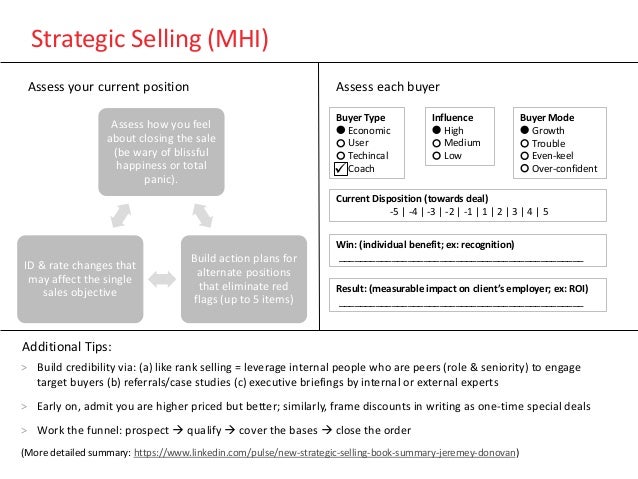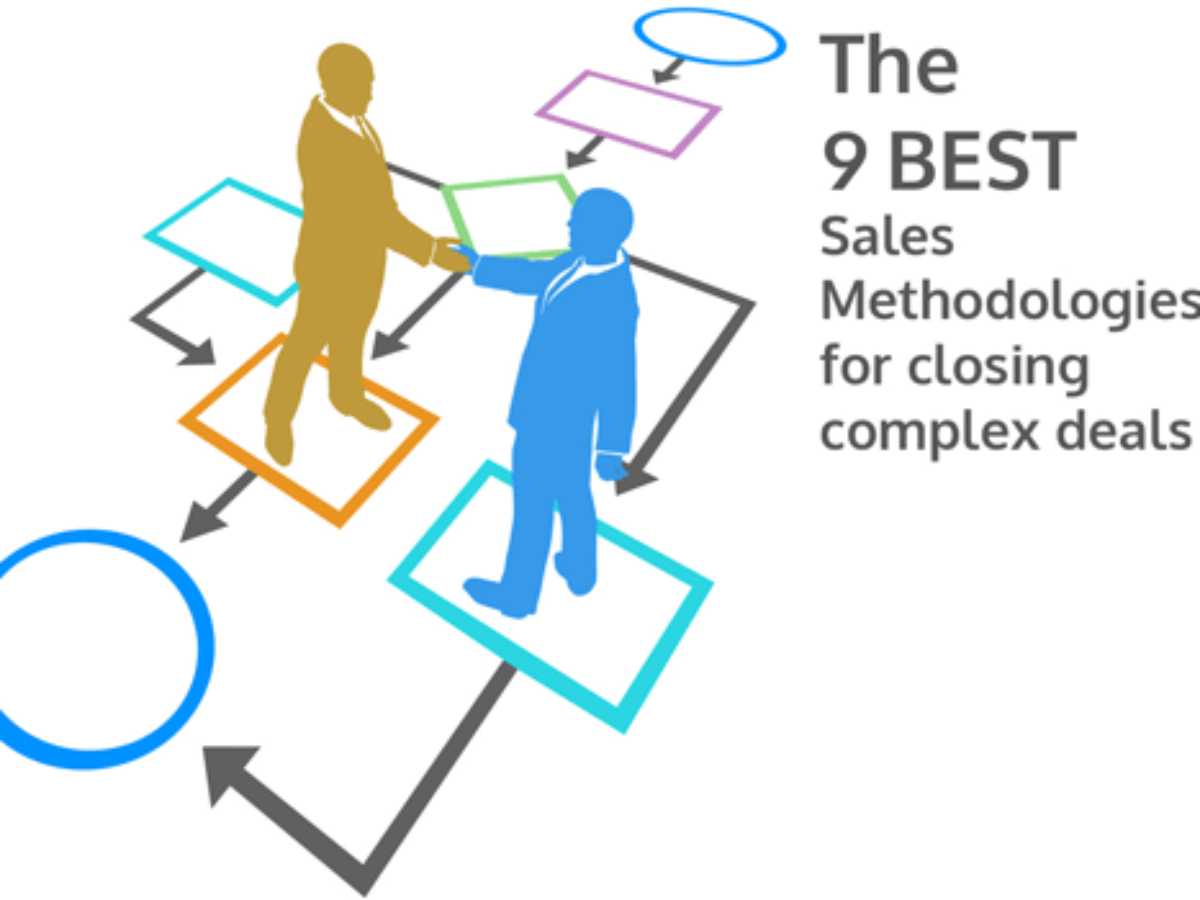- Miller Heiman Strategic Selling Blue Sheets
- Miller Heiman Strategic Selling Blue Sheet Download
- Miller Heiman Strategic Selling Blue Sheet Pdf
- Miller Heiman Strategic Selling Blue Sheet Template
- Miller Heiman Strategic Selling Blue Sheet
- Miller Heiman Strategic Selling Blue Sheet
Reading time: about 6 min
Posted by: Lucid Content Team
A sales methodology is the process or framework utilized by your salespeople, enabling them to effectively begin and engage in each phase of the sales process.
While similar to a sales process, a sales methodology differs in that it’s a disciplined set of principles and best practices that translate into salesperson actions, as opposed to only mapping out a series of steps that lead to sales success. A great sales methodology will describe the “how,” “what,” and “why” of your sales process, from gathering intel on a client to analyzing their business needs.
Notes from the book by Miller Heiman: The New Strategic Selling Joe Murphy 770.662.5700 PAGE 2 The NEW Strategic Selling The following is an outline of the book from Miller-Heiman. Please read the information contained in this report for it will help us all be on the same page and move us closer to our objective – winning business. May 9, 2019 - miller heiman strategic selling blue sheet PDF - Google Search. The Strategic Selling and Conceptual Selling programs combine to offer a process to strategically pursue complex opportunities by understanding both the buying and selling processes at work. The program, which uses both the Blue and Green Sheets, helps map out both the sales opportunity being pursued and the expected outcomes of each critical.
Miller Heiman Strategic Selling Blue Sheets
Ultimately, the value of a sales methodology is 1) repeatability and 2) scalability. Once implemented, it can make the work of recruiters, trainers, and sales managers much more efficient, as it offers a systematic approach to a seemingly un-systematic element: human behavior.
Obvious as it may seem, humans are not, in fact, widgets. Your clients, both real and imagined, have thoughts, perceptions, and unpredictability within their biological makeup. The benefit of research is that, despite the lack of predictability in human behavior, it can close gaps and increase your likelihood of predicting particular reactions based on calculated interventions or disruptions. Excellent salespeople are also excellent disruptors.
The Miller Heiman sales process is a modern approach to selling and a proven methodology for managing complex sales processes. Let’s break it down.
Getting familiar with the Miller Heiman sales process
Robert Miller and Stephen Heiman developed a methodology called Conceptual Selling® as a way to manage the various stakeholders and relationships that exist when a B2B transaction is large and complex. This methodology is best suited for selling between large businesses or when dealing with large sums of money that require many people to sign off or give approval in order to close the deal.
Conceptual Selling® earned its name because it requires salespeople to convince a customer to buy the concept of a solution, rather than a specific product or service. Because you are not only making a sale but also building a long-term relationship and adding to your referral network, the approach acknowledges the different phases of relationship building.
It requires you to investigate and set a single sales objective before the first call even takes place:
- What you will sell
- How much you will sell
- By which day you will have the approval
The Miller Heiman sales process is a proven framework to ensure that salespeople are thoroughly covering a given account. It is a methodology that goes through the sales process by creating opportunities, managing opportunities, and managing relationships.
The core of the Miller Heiman approach involves three steps:
- Categorizing the different contacts/roles by their influence on the given sales cycle
- Determining a potential client’s level of support for your proposition by flagging those who would support as well as those most likely to oppose the proposal
- Influencing that chosen crowd to help them reach a consensus for their buying decision
Lucidchart can help sales teams with this approach—reps can import Salesforce contacts to quickly build account maps that help identify decision-makers and the best path to sale.
The choice for today’s forward-thinking company
A true salesperson understands that an approach that is based solely on “closing the deal” can sever long-term potential.
As introduced by Xerox in the 1970s, the Professional Selling Skills® (PSS) approach was among the first sales frameworks that seriously considered the needs of the client. Satisfying client needs may be intuitive for some, but in the world of sales, there can be an unsavory and lingering reputation that persists—one characterized by a greedy disregard for actual client needs, both short and long-term.
The Miller Heiman Sales Process aims to dismantle that short-sighted perspective and replace it with an authentic, mutually beneficial and long-term relationship.
Is this sales methodology right for you?
As a sales model, the Miller Heiman methodology has a few key benefits for the salespeople who drive your company.
1. Get outside of your comfort zone

We all know that the definition of “insanity” is continuing to do the same thing expecting a different result. The Miller Heiman model allows lines of communication to extend beyond the low-hanging fruit and encourages salespeople to do their complete homework on accounts and not get stuck on the single contact with whom they feel the most comfortable speaking. In the world of sales, this is a common occurrence, even among the most experienced and influential leaders.
2. Move beyond one-size-fits-all
The Miller Heiman sales process provides a constant reminder that you need to offer a tailored value proposition to the different roles and individuals on the account. This means that salespeople can’t just deliver a one-size-fits-all sales pitch to everyone in the target account.
Gone are the days of salespeople refusing to also be researchers. Technology has given us access to so much information that there are no more excuses for reps not doing their homework prior to approaching a sales prospect. Reading is fundamental, and customization is the future.
3. Build trust
While there is certainly additional work required on the front-end, back-end benefits include long-term sustainability, deeply rooted relationship-building, and increased likelihood of repeat sales. Trust has always been a priceless and rare ingredient in every relationship. The companies who learn how to build the trust required for 21st-century sales success are the companies who will pull ahead in a quickly evolving global economy.
Innovation over time: past to present
The Miller Heiman methodology is, in a way, taking us back to the basics: relationship building, authenticity, and mutual benefit. It embraces the inherent complexity of organizations by including as many decision-makers as possible in the pre-pitch analysis. It provides the 21st-century salesperson a heightened level of critical thought required to reel in the “big fish” and manage complex sales processes.
Robert Miller and Stephen Heiman created their signature sales process as the result of decades of progressively innovative sales strategies. The duo began with the PSS and SPIN® Selling processes. As Miller Heiman Group’s core sales methodology, Strategic Selling®, has consistently been the go-to framework for globally recognized companies. Today, the original methodology is called Strategic Selling® with Perspective, and is often coupled with Conceptual Selling®, Large Account Management℠, SPIN Selling® and Professional Selling Skills®, depending on client needs.
Taking this sales methodology a step further
Have you decided to implement the Miller Heiman sales process in your sales org? Lucidchart is a perfect compliment to this groundbreaking methodology. Our visual workspace will help your team:
- Identify key relationships and find the most efficient path to closed-won.
- Track and monitor the health of all deals.
- Conduct more effective deal reviews.
- Ensure that account knowledge stays within the organization.
By helping teams to more effectively coordinate, communicate, and execute account-based strategies, Lucidchart leads to shorter sales cycles, bigger deal sizes, and more opportunities closed.
With a well-researched plan, thoughtful and thorough execution backed by the best tools available, your company’s success is all but guaranteed. A proven methodology for high-level sales, supported by Lucidchart, is the best way to ensure your major sales goals are not only achieved but managed and surpassed, quarter over quarter, year over year.
See how Lucidchart strengthens any sales methodology, creating adherence and uniformity across your org.
Learn moreThere are numerous sales strategies to streamline sales workflows and drive sales processes to a successful conclusion. One of the most important is the methodology developed by Robert B. Miller and Stephen E. Heiman and named after them.
The goal of this strategy is to build a long term business relationship instead of a one-time contract. Customer satisfaction is the foundation of this strategy since a customer drawing an important benefit from the purchase sees it as an asset for his company. To make it happen, his requirements must be met and his needs covered. This is why it is indispensable for the seller to exactly understand the problems and goals of the buyer. The more details the seller gains insight into the need for optimization, the more targeted he can adjust his sales strategy.
Purchase influencers
Mostly, in a company, the direct contact is not the one taking the decision, but a group of managers, team leaders, etc. In addition to knowing the intention to buy, it is equally important to know the roles of the respective contact persons during the sales process. Who is the decision maker? Who releases the budget? Who is going to use the product? The Miller Heiman methodology divides the so-called purchase influencers into four categories:
- The decision-makers: the decision-makers are the key players within the sales process. They release the budget and their consent is indispensable for the purchase. This is why it is particularly important to know their opinion regarding the project and to convince them.
- The users:Users are directly affected by the potential purchase of the product since they are going to use it. Making them understand which benefits they would experience themselves and for their work processes is essential.
- The guardians: the so-called guardians must not be ignored. Since they are in charge of carefully examining the potential products, comparing them in terms of price-performance ratio, company requirements, etc., and then making recommendations or discouraging from buying. They do not make the final decision, however they can significantly influence the decision-makers.
- The coach: in contrast to the other roles, this one evolves during the sales process. The task of the coach is to lead through the sales process. For the sellers, this person has a great significance since new contacts can be initiated through him and helpful information collected.
For a successful sales process, all of these role types in the company must be identified anew for each transaction. Only when the seller has the ability to correctly assess all contact persons and to address individually to their roles, he manages to well position himself.
Attitudes
In addition to the role of the purchase influencers, their attitudes regarding the project is of great importance. The Miller Heiman methodology also differentiates four types:
- The growth attitude: Contact persons with this attitude are dissatisfied with the current situation and would like to optimize it thanks to the purchase of the product. If the purchase influencers are convinced of the benefits, then the purchase opportunity is really high.
- The problem attitude: purchase influencers having this attitude do not estimate the current situation as critical as the contact person with growth attitude. If they are convinced of the benefits of the product, then the purchase opportunity with them is also really high.
- The “everything is fine” attitude: these contact persons are satisfied with the current situation and think that “everything is fine”. For them, there is no need for a change, which lower the purchase opportunity.
- The euphoria attitude: these decision-makers see the current situation as really positive and believe that the processes will not be improved but worsened by purchasing the product. They also see no need for a change, the purchase opportunity is therefore very low.
Winner results
The Miller Heiman methodology strives for a win-win situation for both sides – sellers and buyers, since only then a long term business relationship can be built. Therefore, one should only sell to the buyers what they really need and what actually confers them an advantage. If something has been imposed on them, the sellers are the winners in the short-term, the buyers however the losers. The sellers lose too in the long-term, since the dissatisfied buyers are unlikely to make a second purchase. The seller is also losing too much concessions, for example, the price of the scope of delivery.
In order to make every decision-makers of the company a winner, they should be shown what are their personal winner results, i.e. their personal benefits.

Red flags
If potential obstacles or reasons, which might jeopardize the purchase are uncovered, they will be signalized by a red flag in the Miller Heiman methodology. This way the “dangers” are kept in mind and it enables timely countermeasures in the context of the sales process. Following each contact with purchase influencers, the “red flags” should be reviewed, updated and possibly extended to new information.

Miller Heiman Strategic Selling Blue Sheet Download
Sales funnel
Miller Heiman Strategic Selling Blue Sheet Pdf
A key element of the Miller Heiman methodology is the sales funnel divided on three level.
- On the first level, the purchase influencers are contacted and all available information is taken into consideration. Data which are not useful for a successful transaction will be sorted out.
- On the second level, the purchase influencers, their roles, attitudes and winner results are determined. In addition, all potential purchase obstacles should be detected and documented. Based on this information, the appropriate sales strategy is defined.
- The third level of the funnel filters out all sales processes that are unlikely to be successful given the aforementioned issues. Only the processes with very high sales probability remain.
Miller Heiman Strategic Selling Blue Sheet Template
Given the Miller Heiman methodology, the employees should prioritize the different levels in their sales work as follows:

Miller Heiman Strategic Selling Blue Sheet

Miller Heiman Strategic Selling Blue Sheet
- First complete a third level sales transaction,
- Then identify potential buyers and rate them on the first level,
- And finally classify the buyers at level two.
This keeps the funnel flow going. The evaluation of potential customers can be facilitated by the so-called ideal customer profile with which the prospective customers are compared. This profile is based on the most positively valued existing customers and new customers.